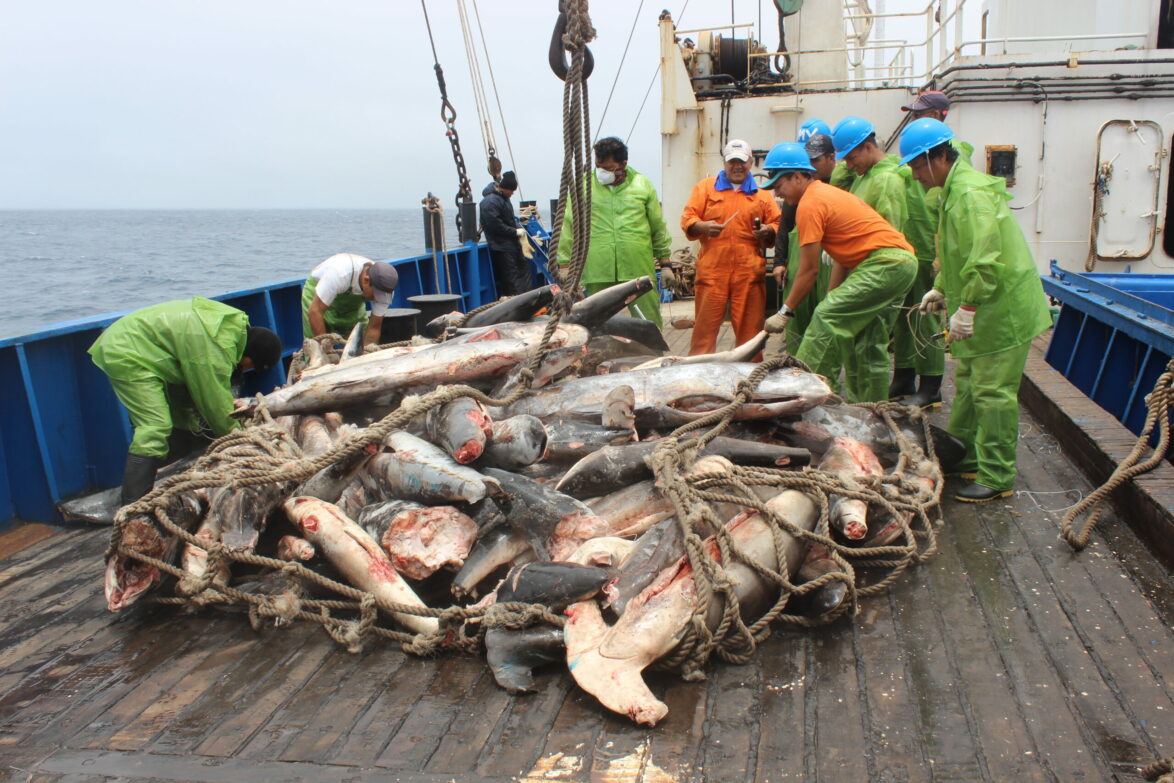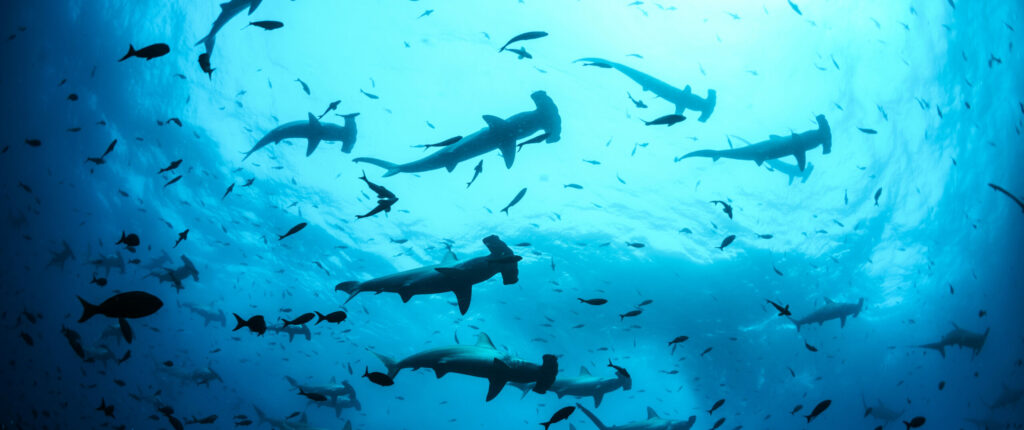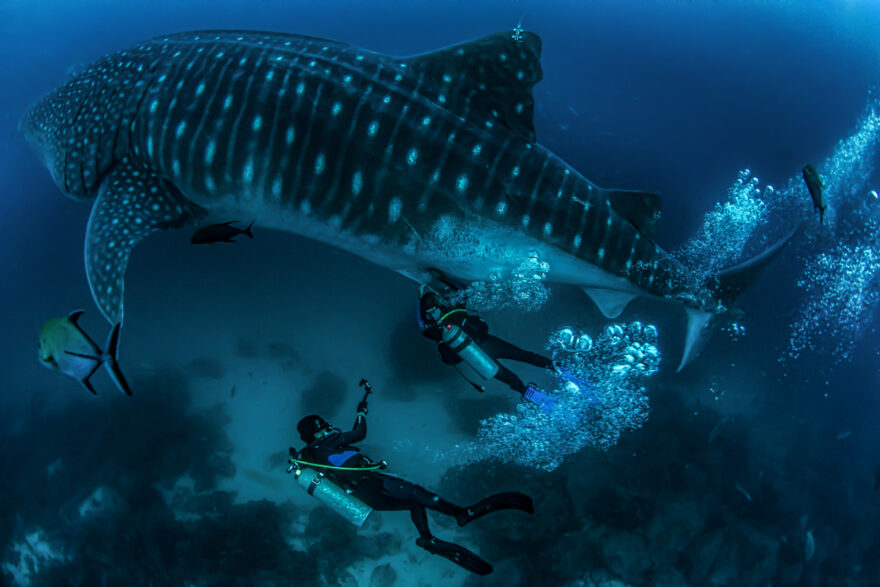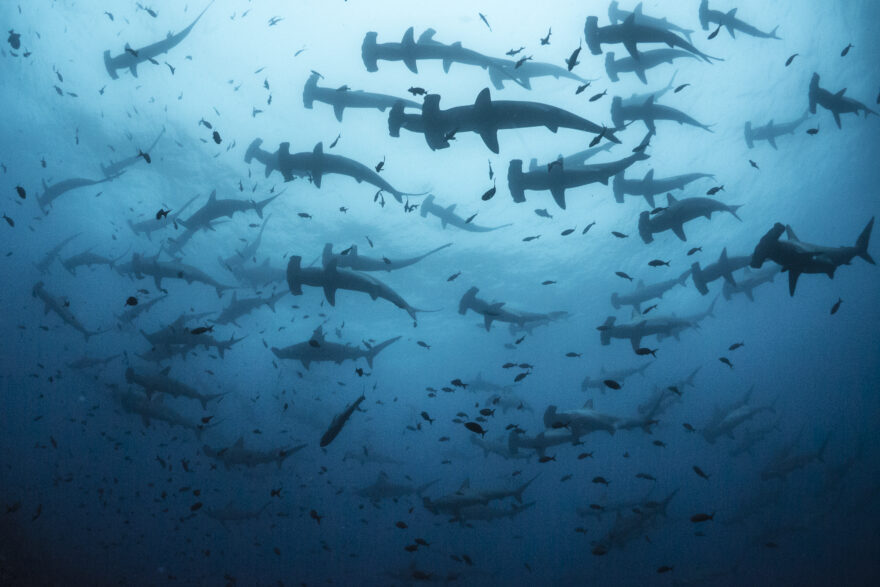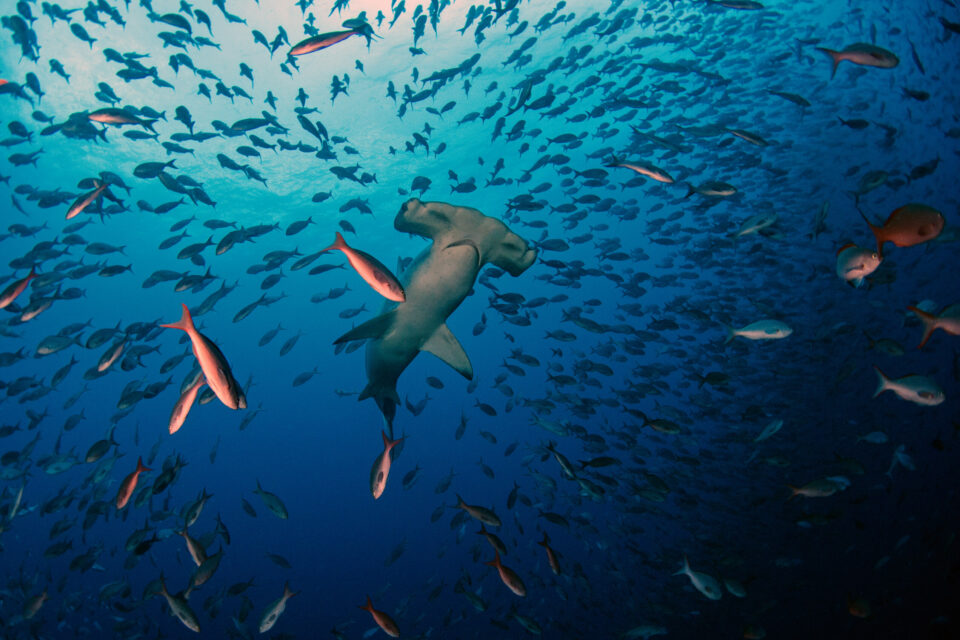
Island overview
The rugged, isolated island of Wolf is the remains of an extinct volcano which extends 253 metres above sea level, situated around 40 kilometres southeast of Darwin island.
Wolf is named after the German geologist Theodor Wolf, who published a number of important works on the geography and geology of Galapagos and mainland Ecuador, and also gave his name to Wolf volcano on the island of Isabela.
The island itself is not accessible to tourists, but the dive site of El Derrumbe at the southern end of the island is a big draw thanks to its abundance of scalloped hammerheads and Galapagos sharks. Whale sharks can also be seen at Wolf, along with turtles, manta rays and numerous species of pelagic fish. On land, the most infamous resident of Wolf is the so-called ‘vampire finch’, which feeds on the blood of Nazca and red-footed boobies.
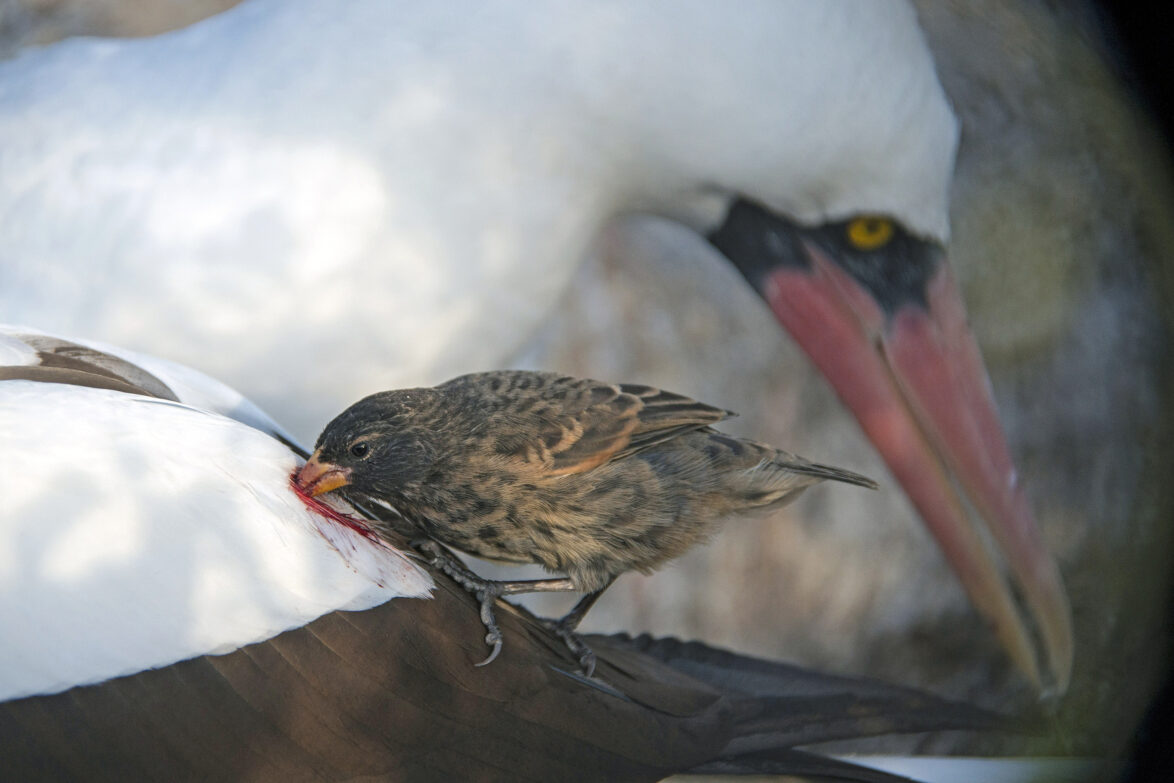
Wildlife highlights

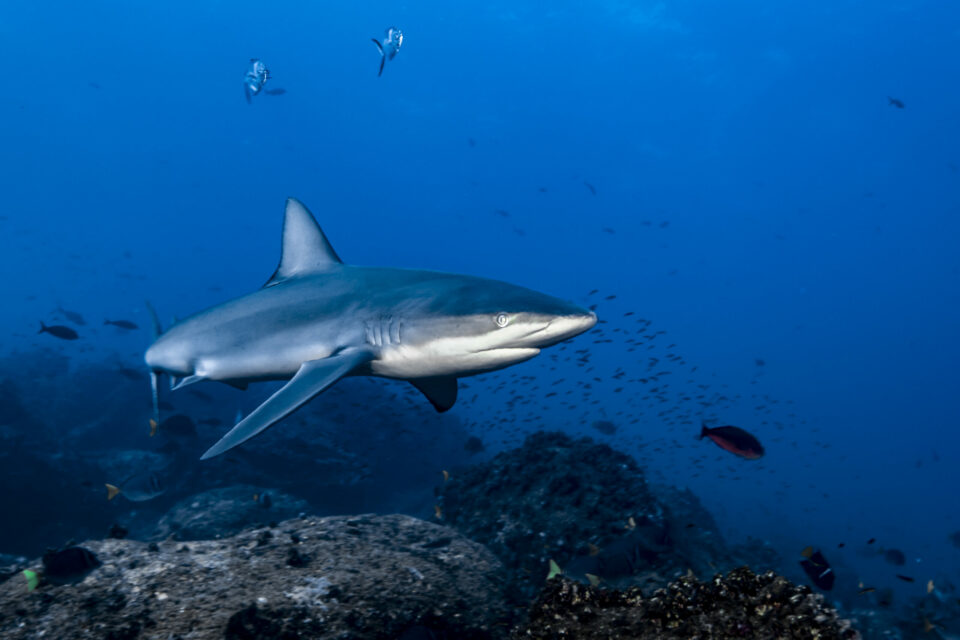
Galapagos shark
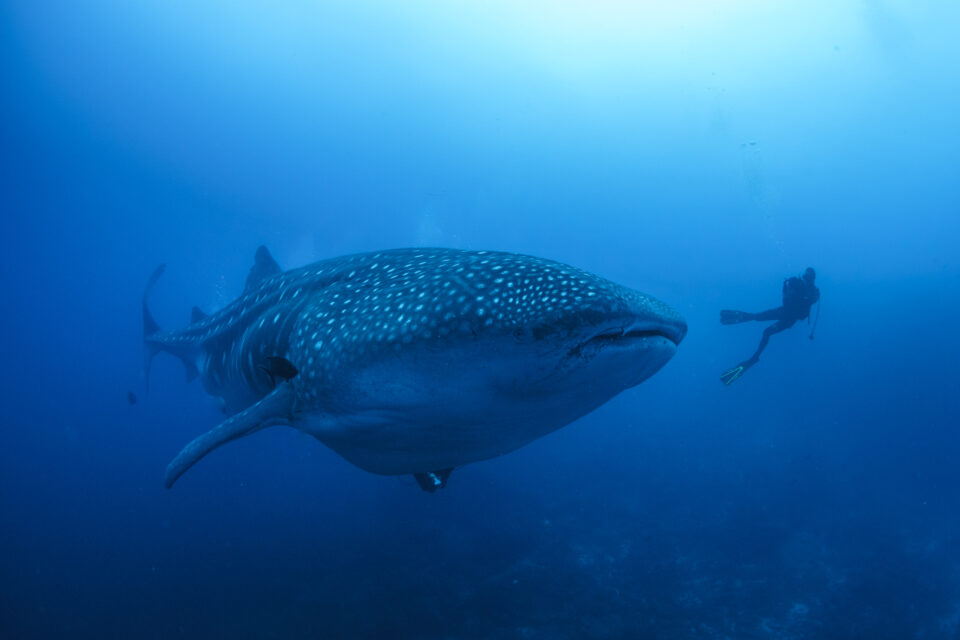
Whale shark

Darwin's finches
Conservation challenges
Wolf’s remote location, together with its abundant marine life, means that its waters are particularly vulnerable to illegal fishing activity. Unregulated dive tourism is also a concern. The Galapagos National Park maintains a floating base at Wolf to patrol the Archipelago’s northern waters.
The new Hermandad Marine Reserve, which was formally created in January 2022, is situated to the north east of Wolf and includes a 30,000 km² no take zone, giving extra protection to migratory marine species such as whale sharks and hammerheads as they move between Galapagos and Cocos Island, Costa Rica.
